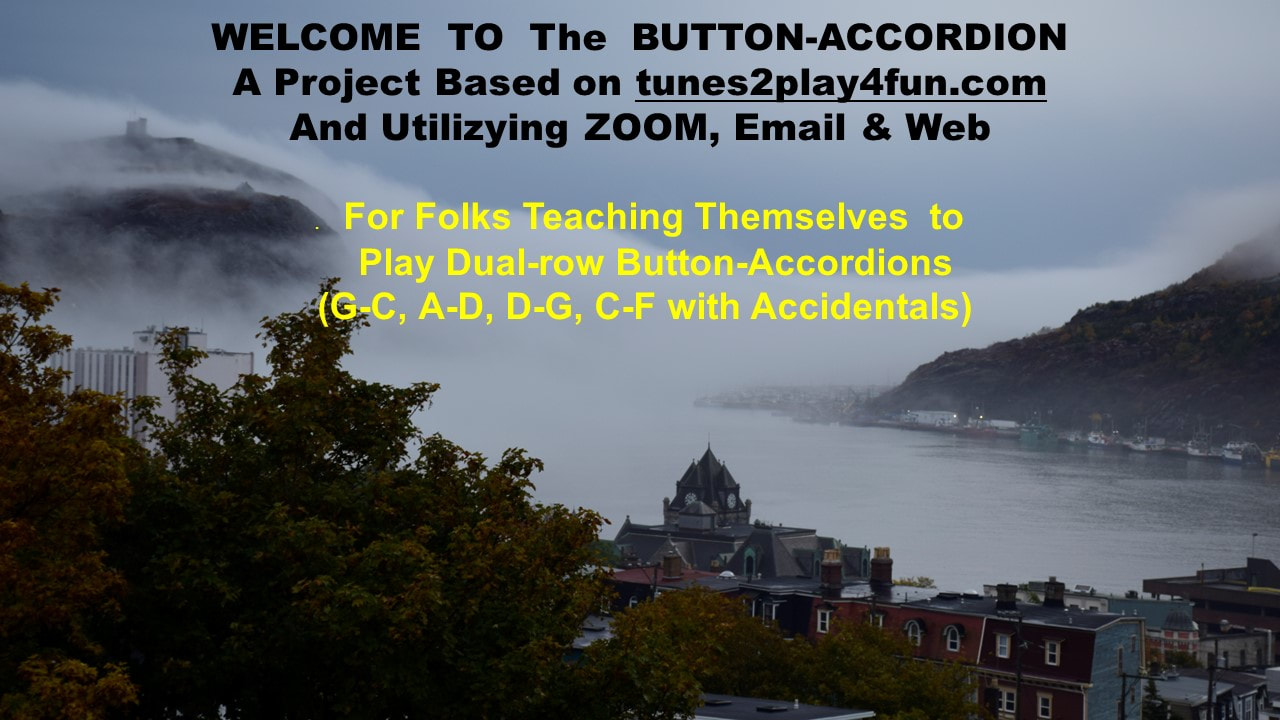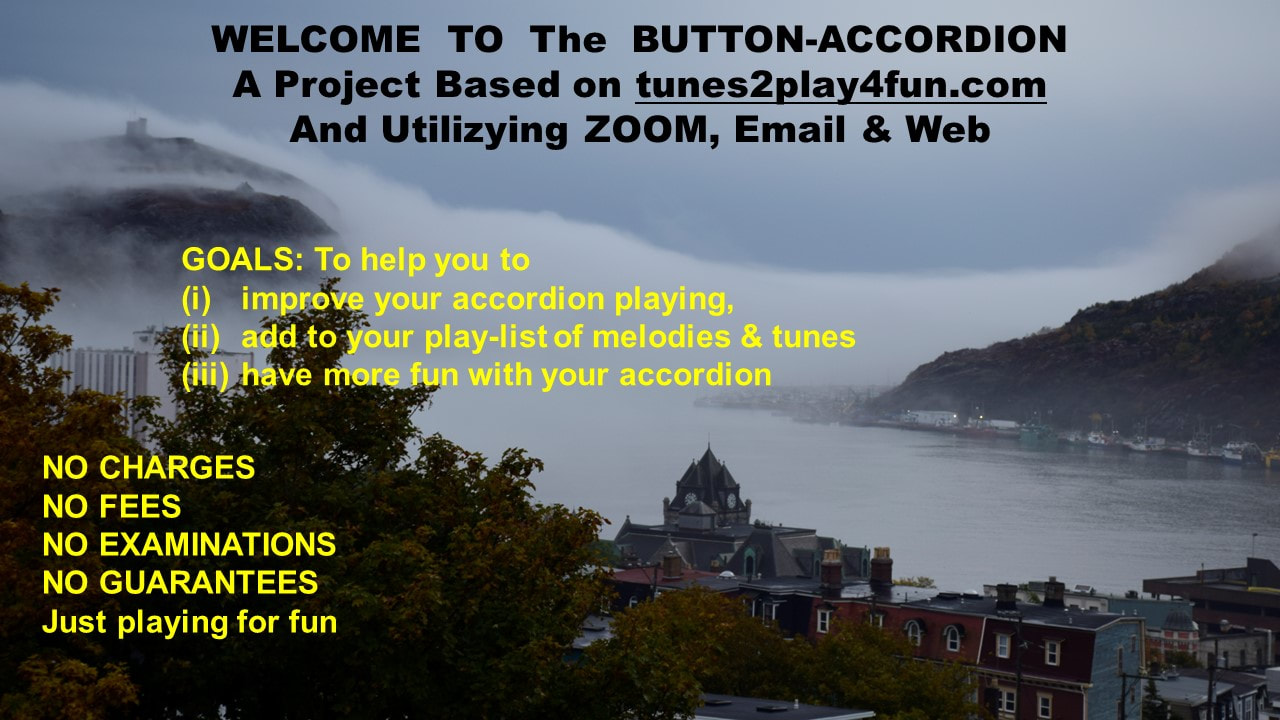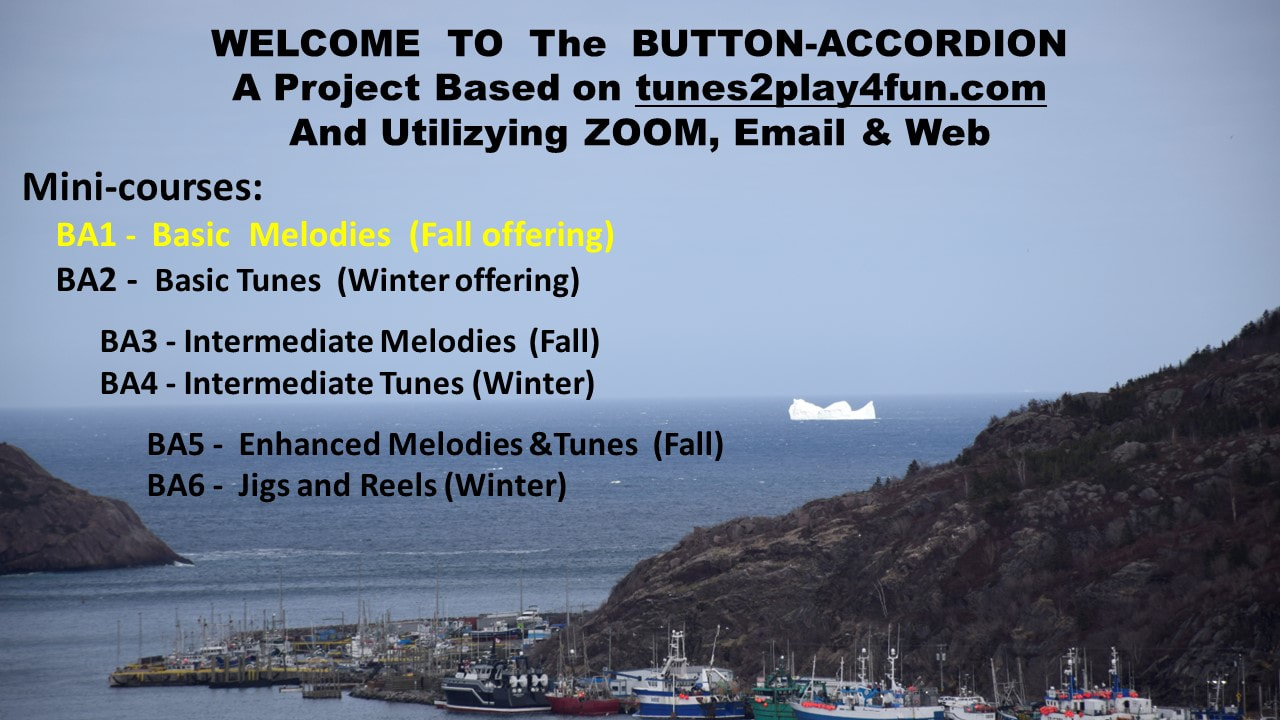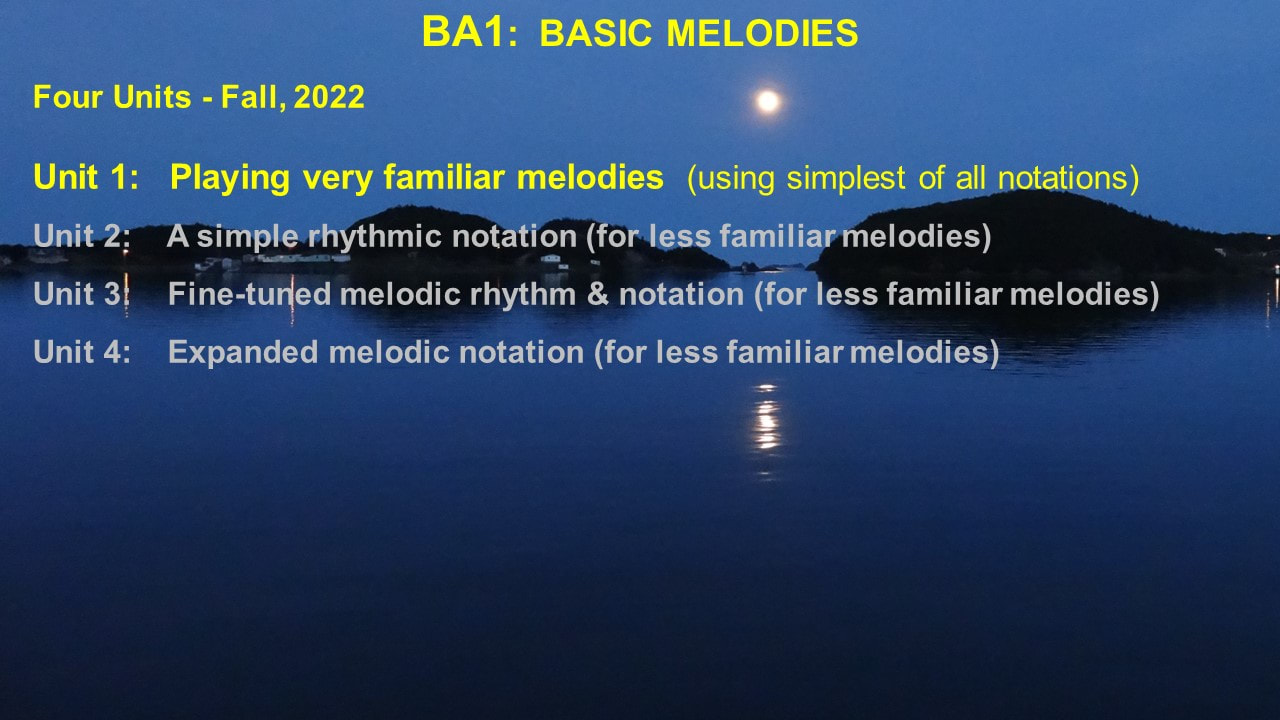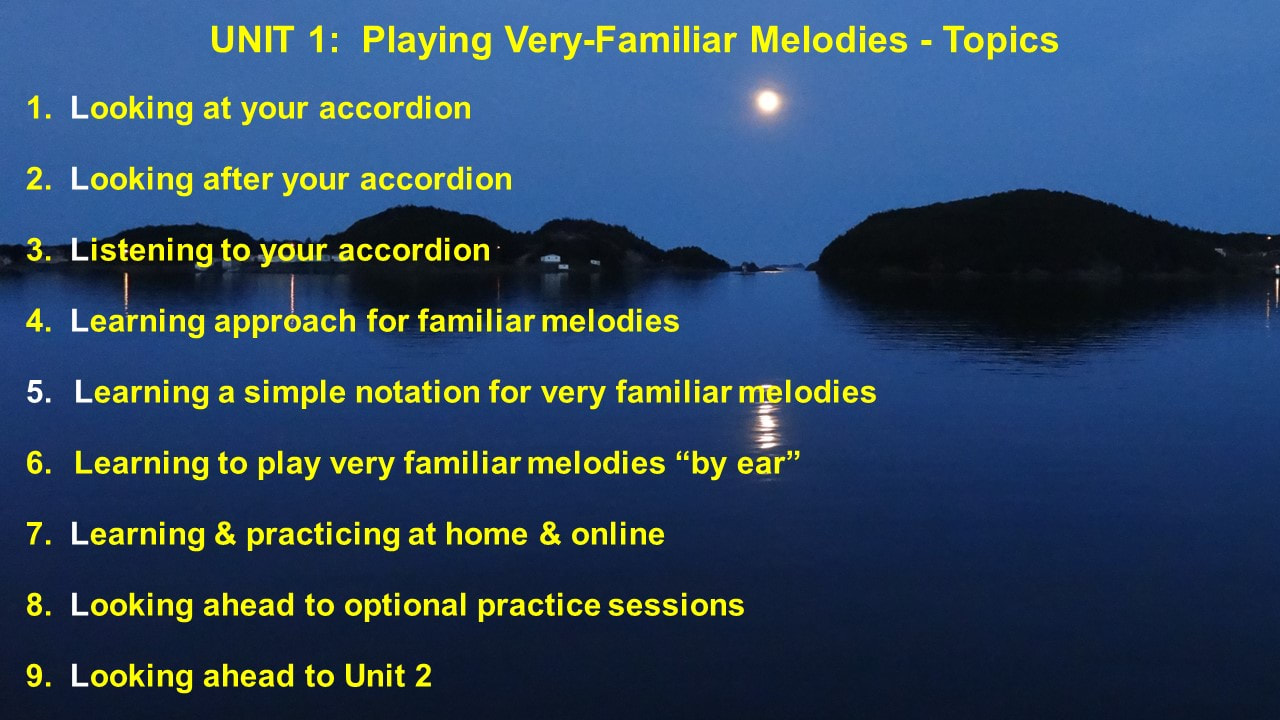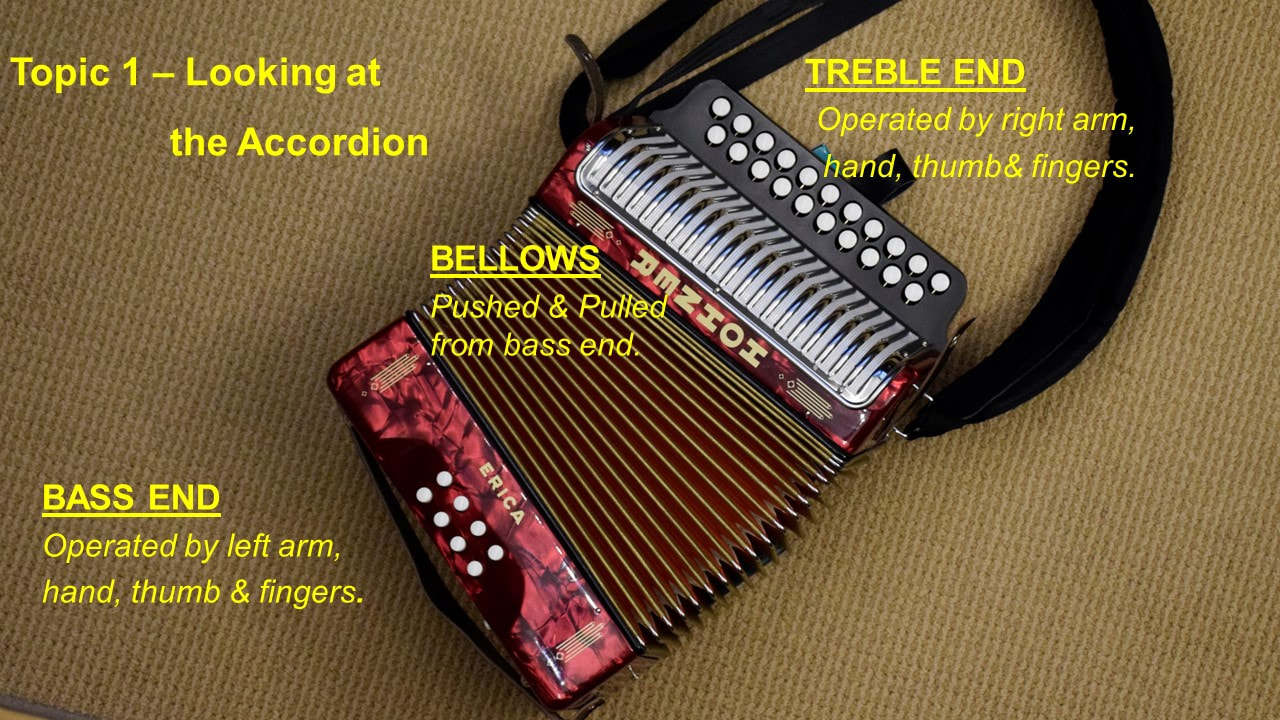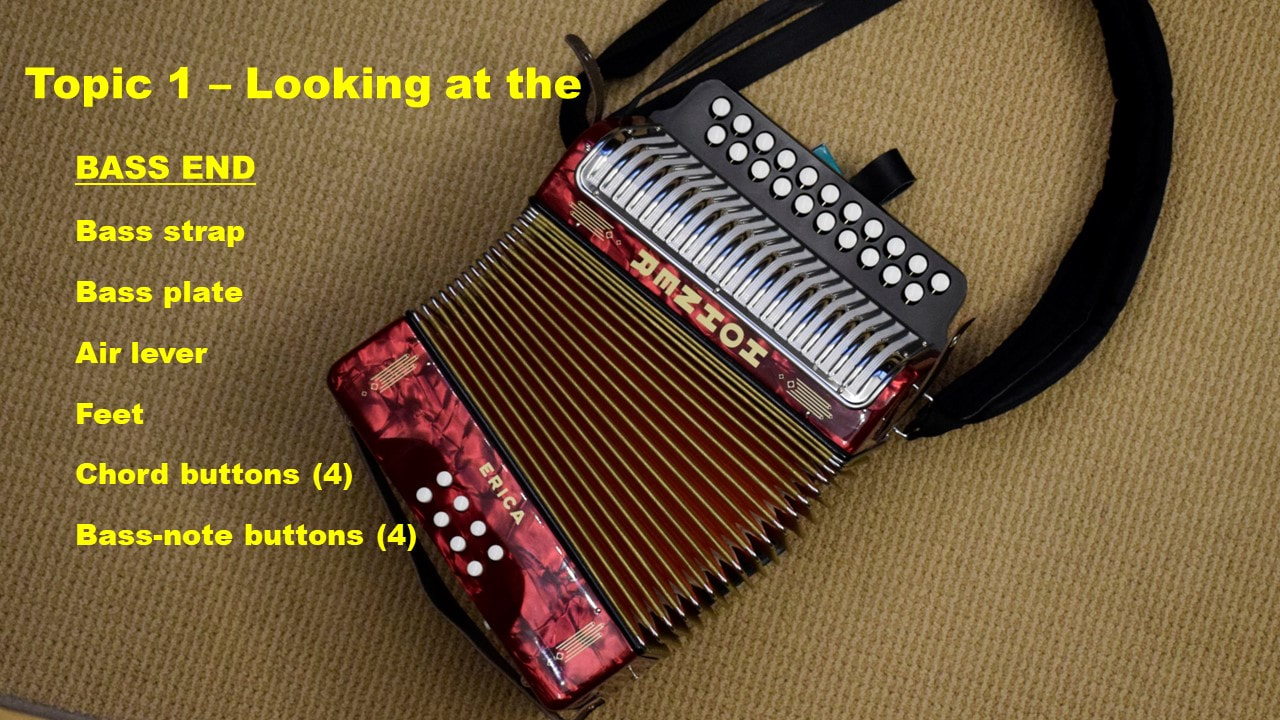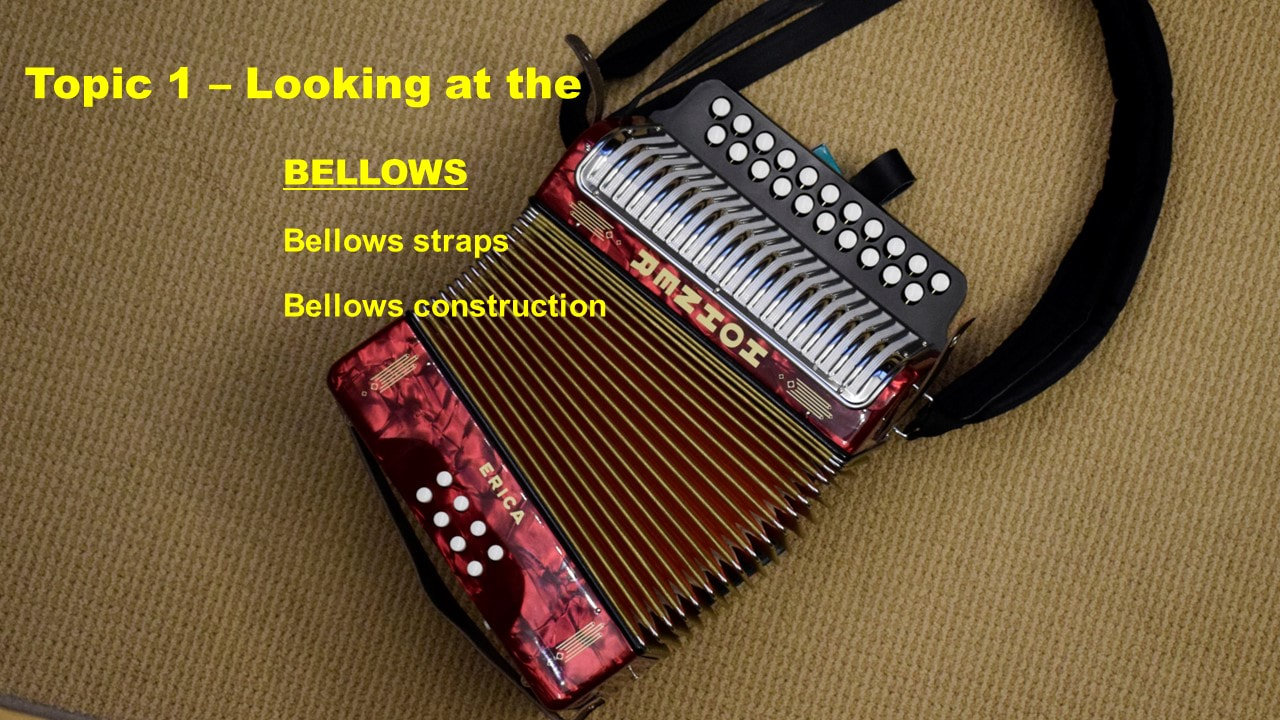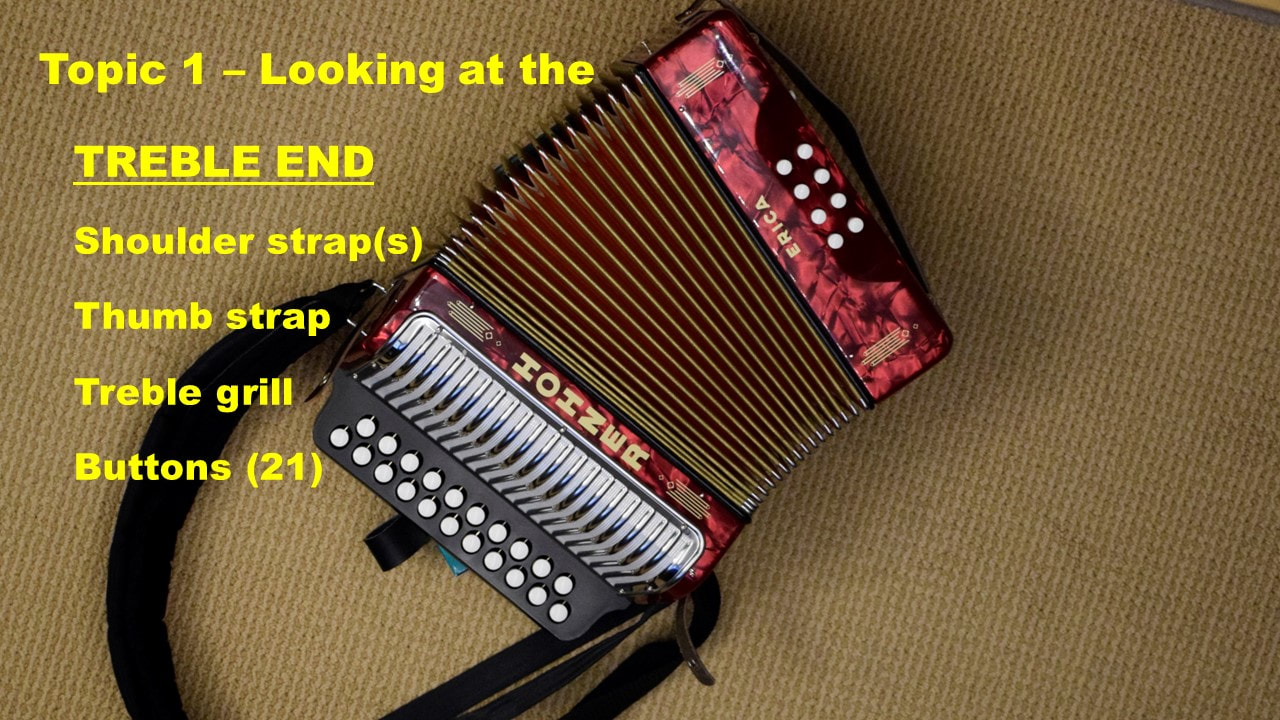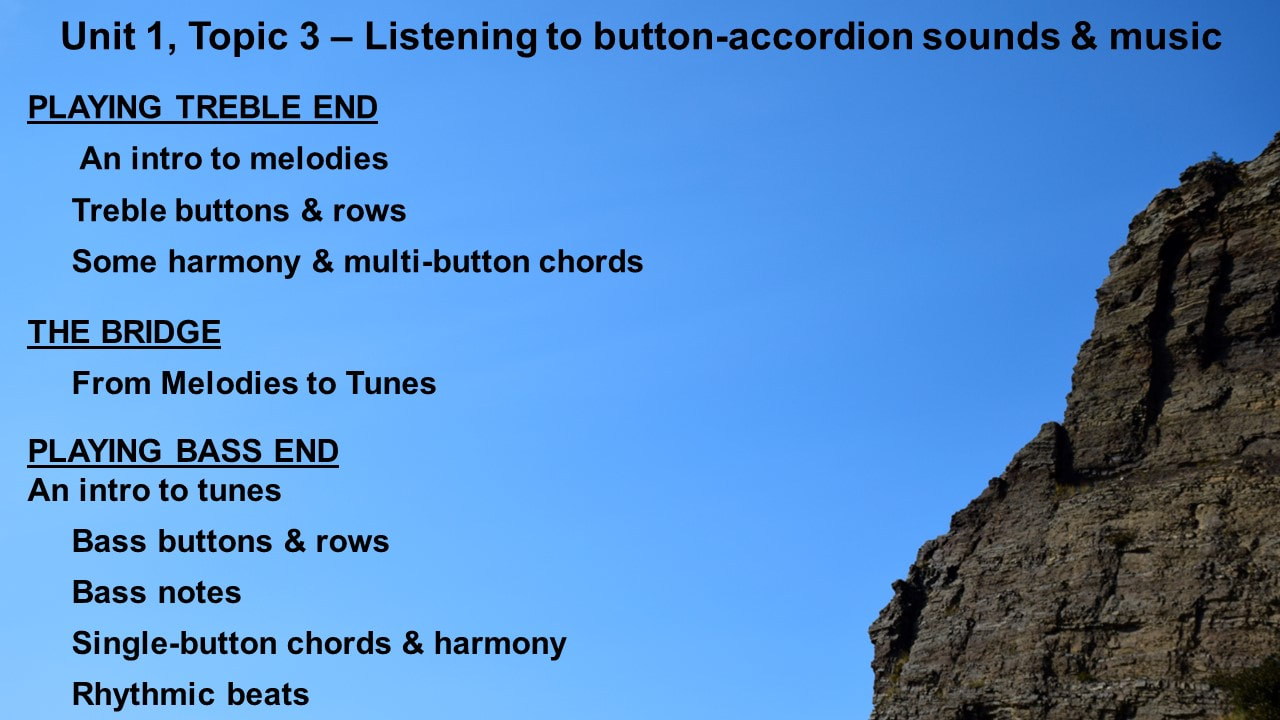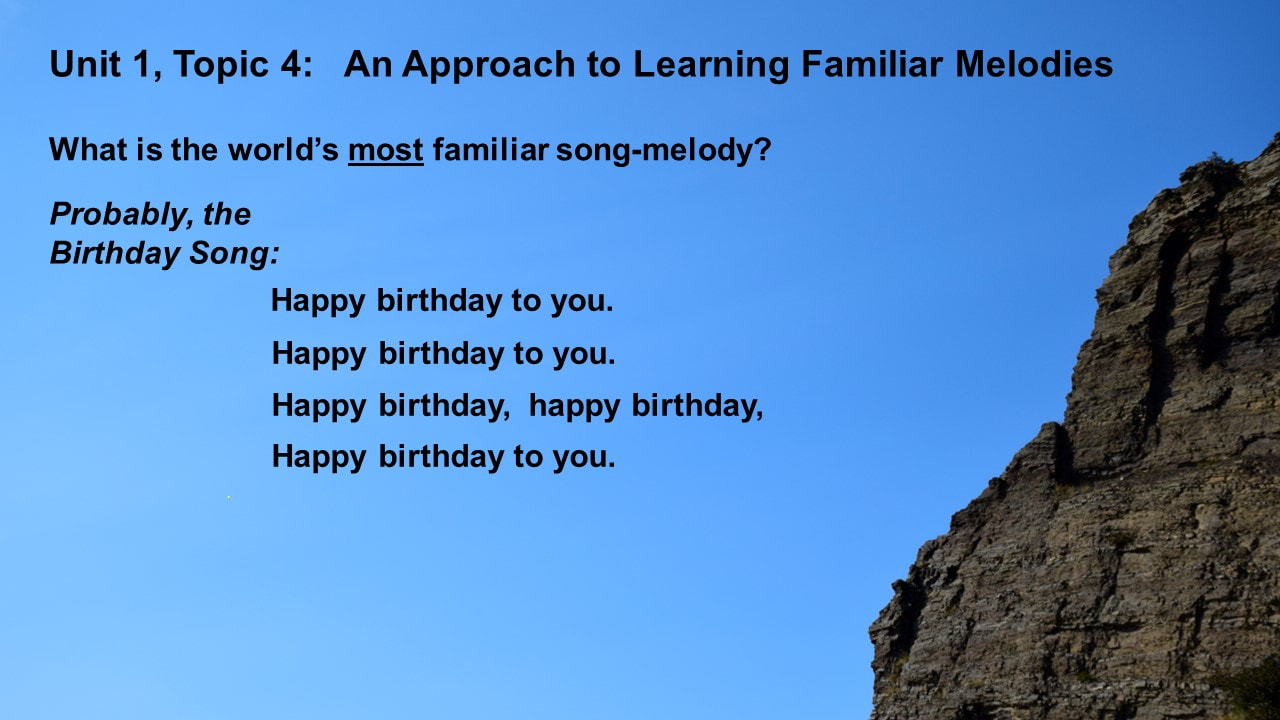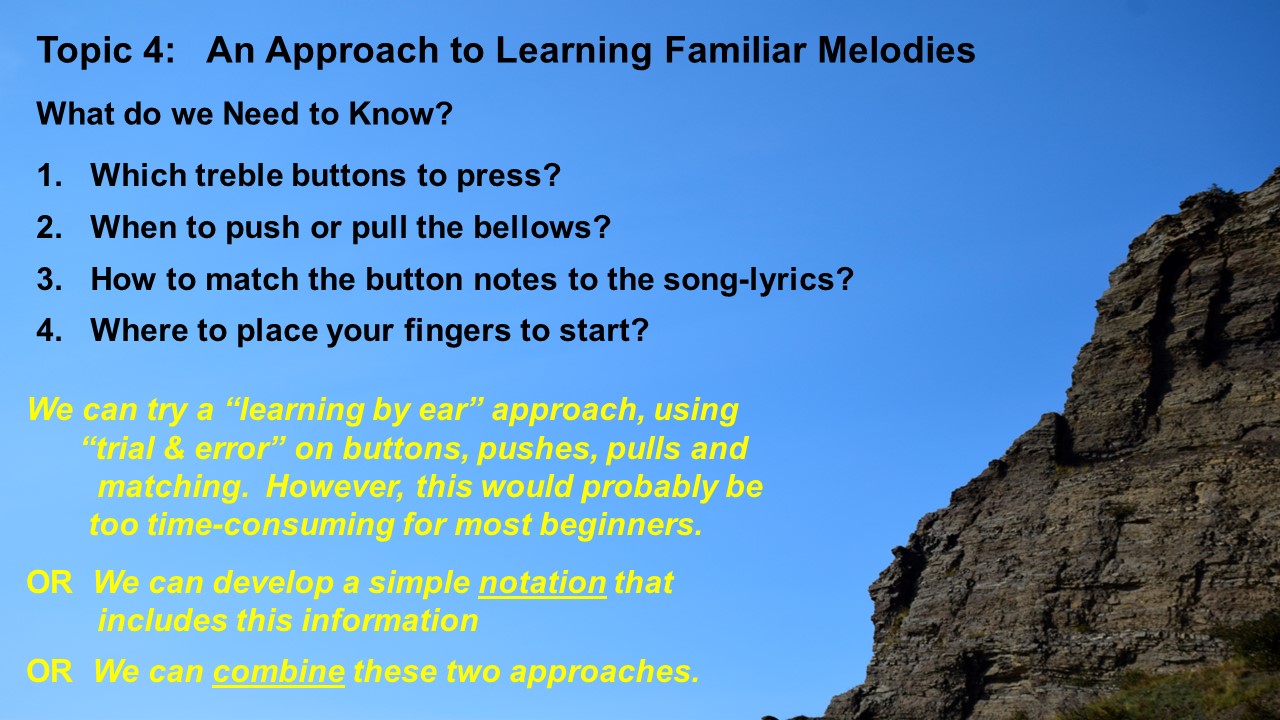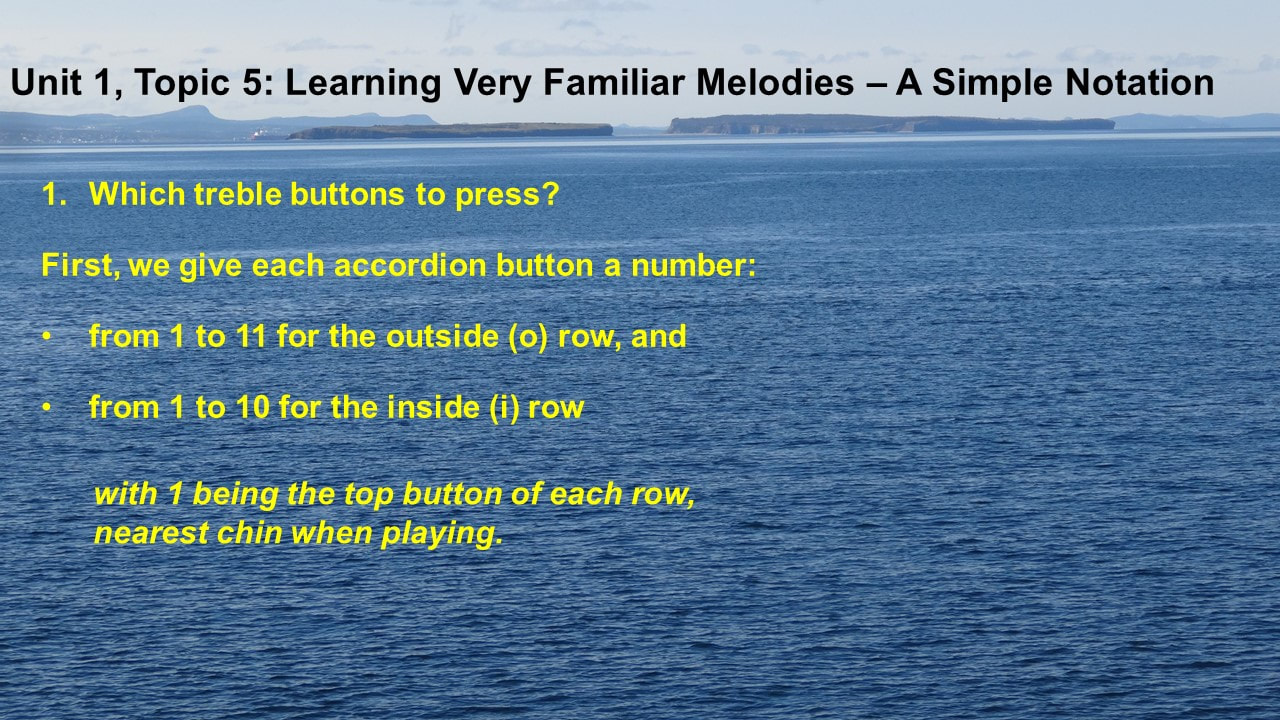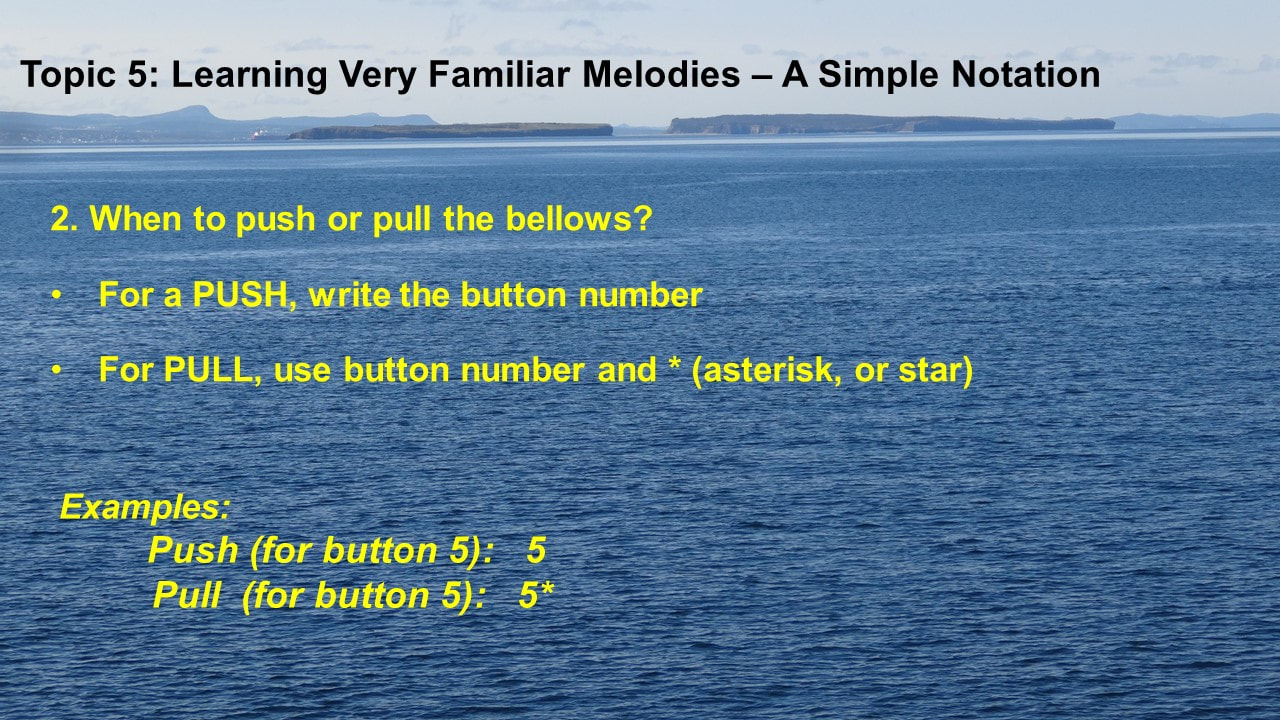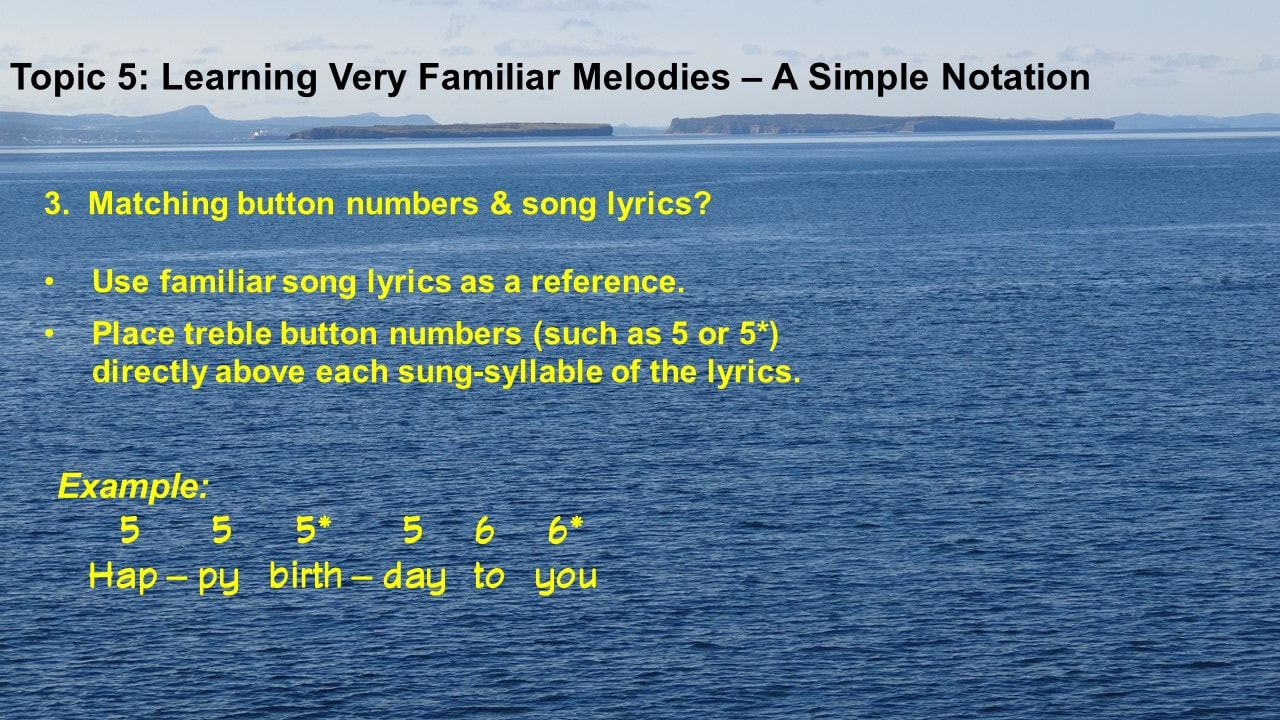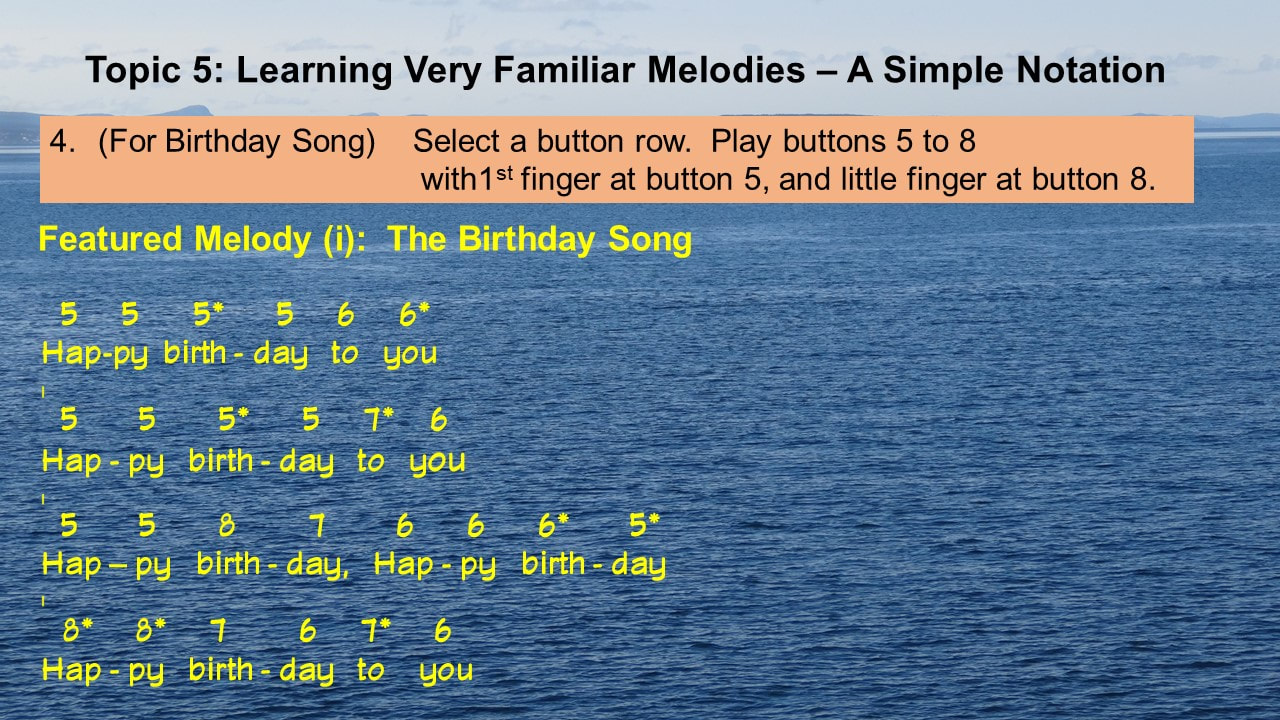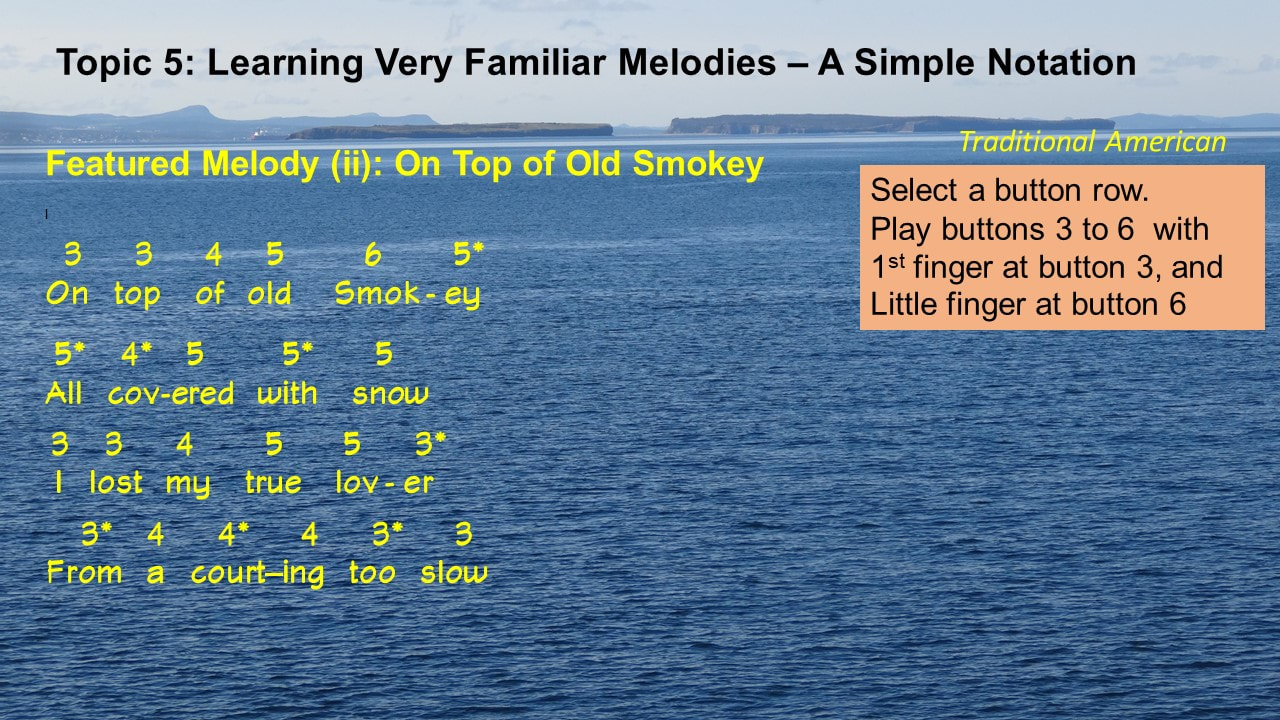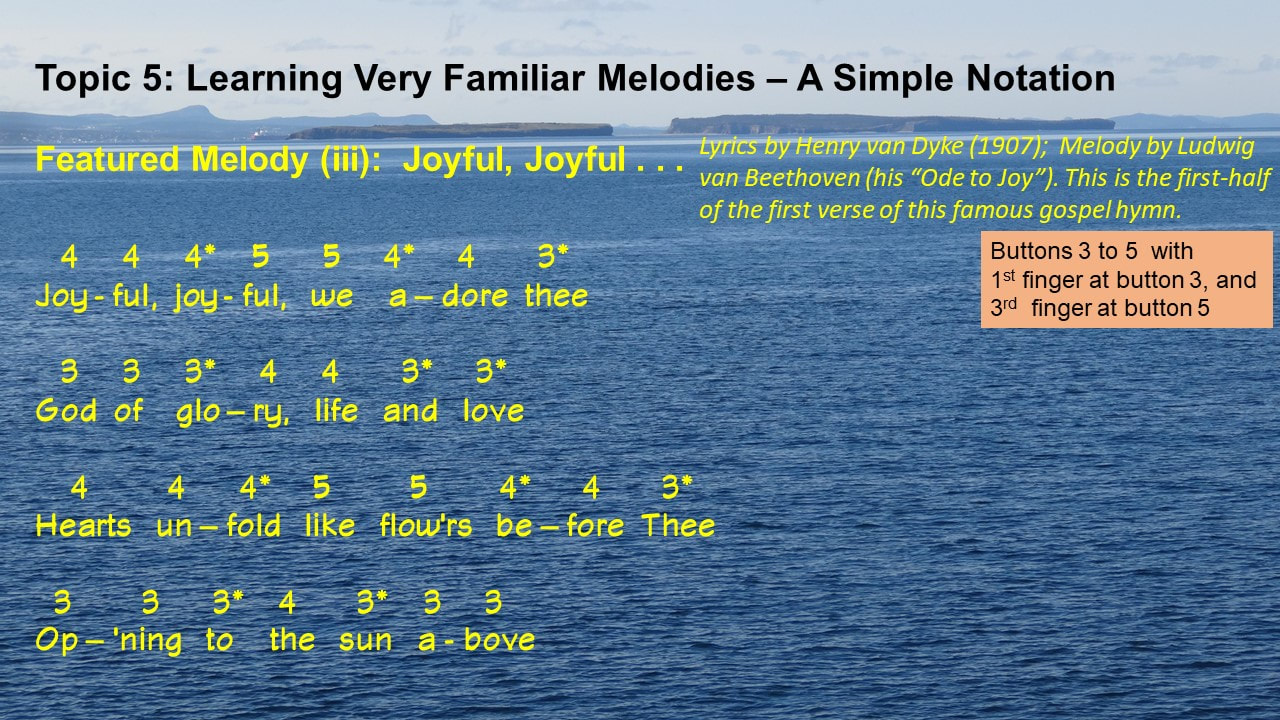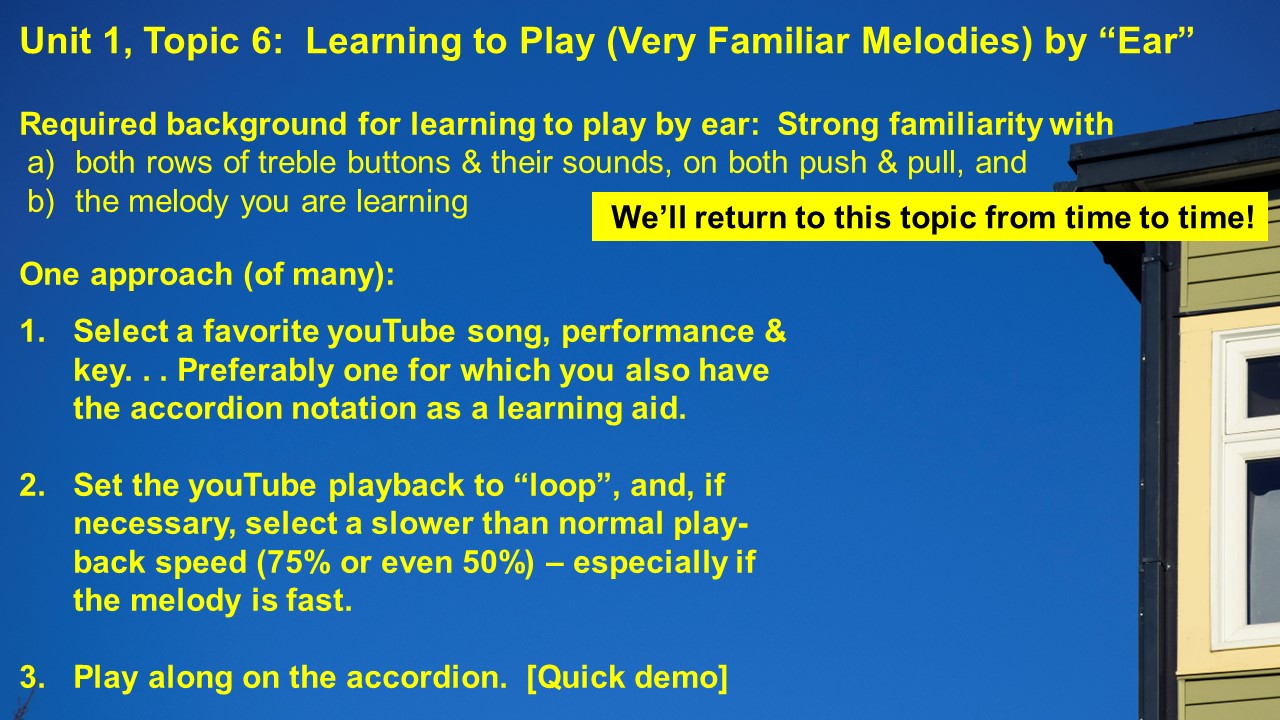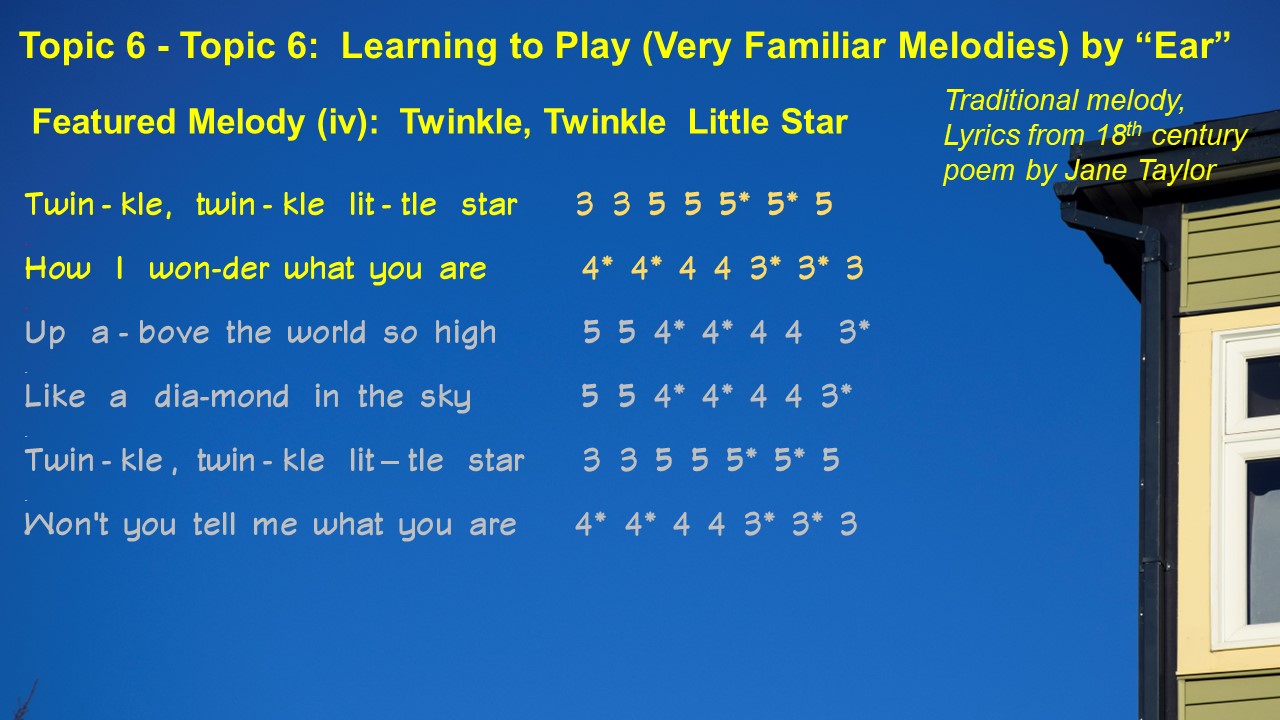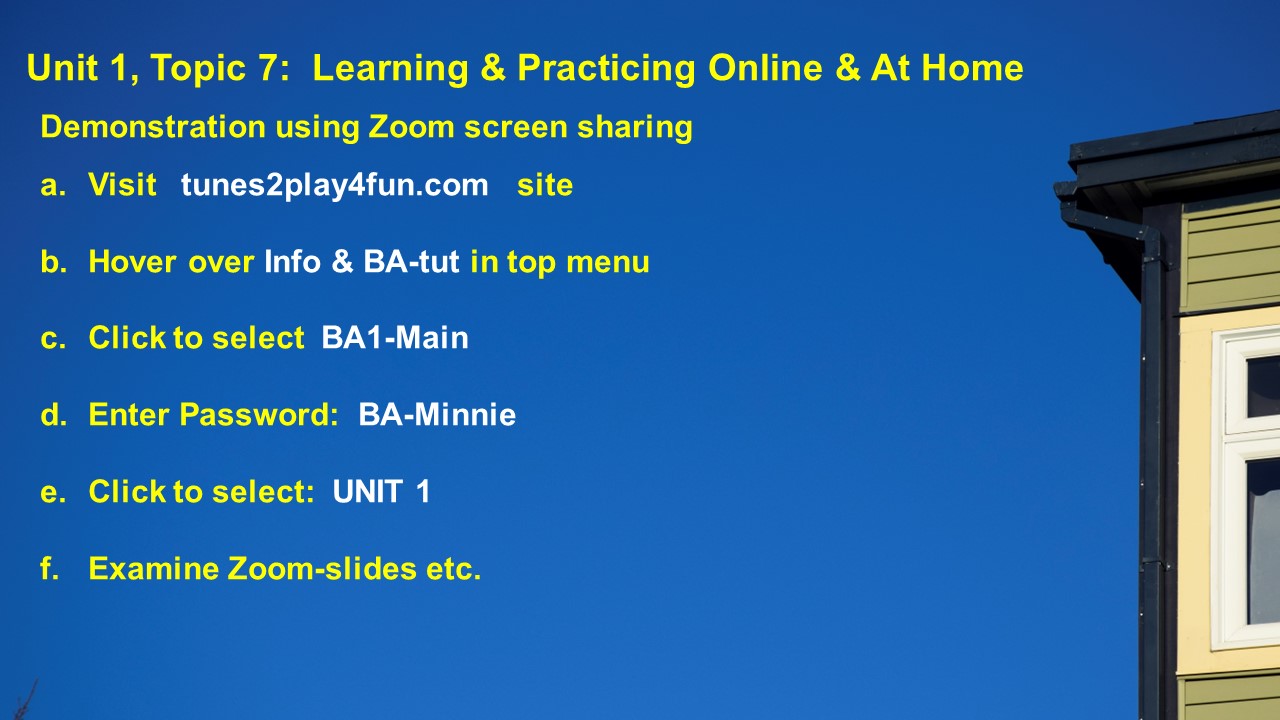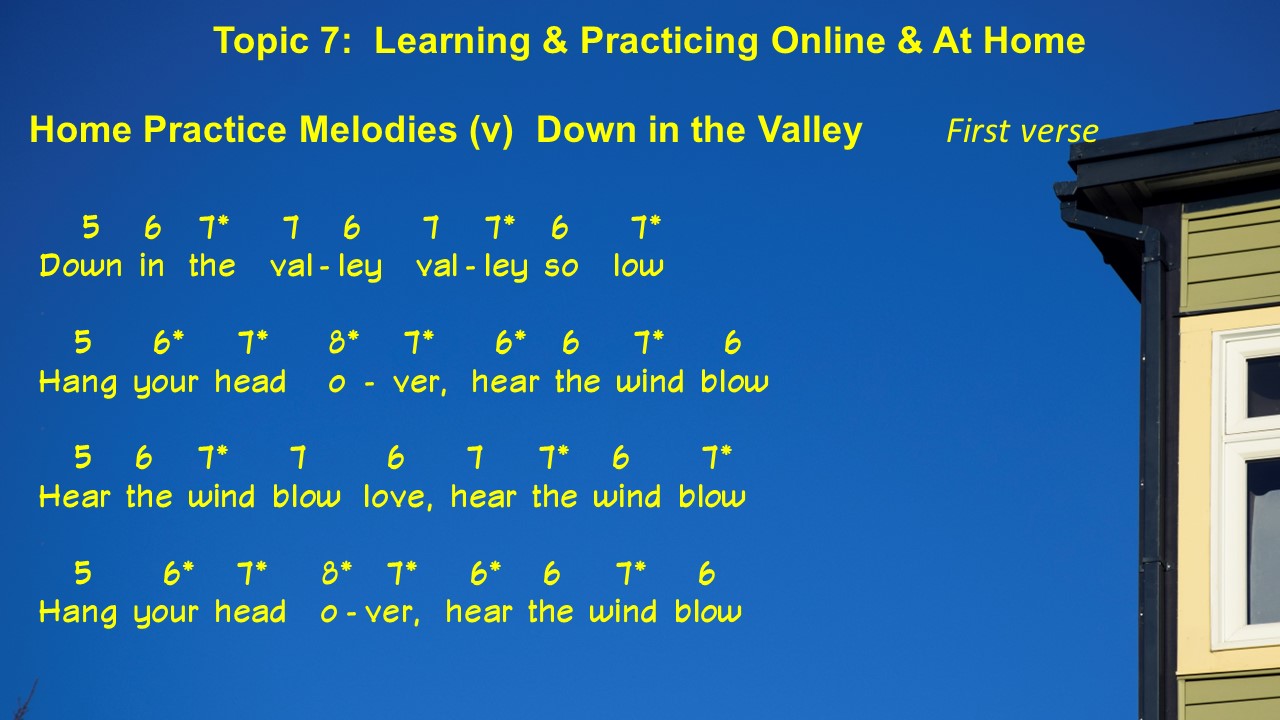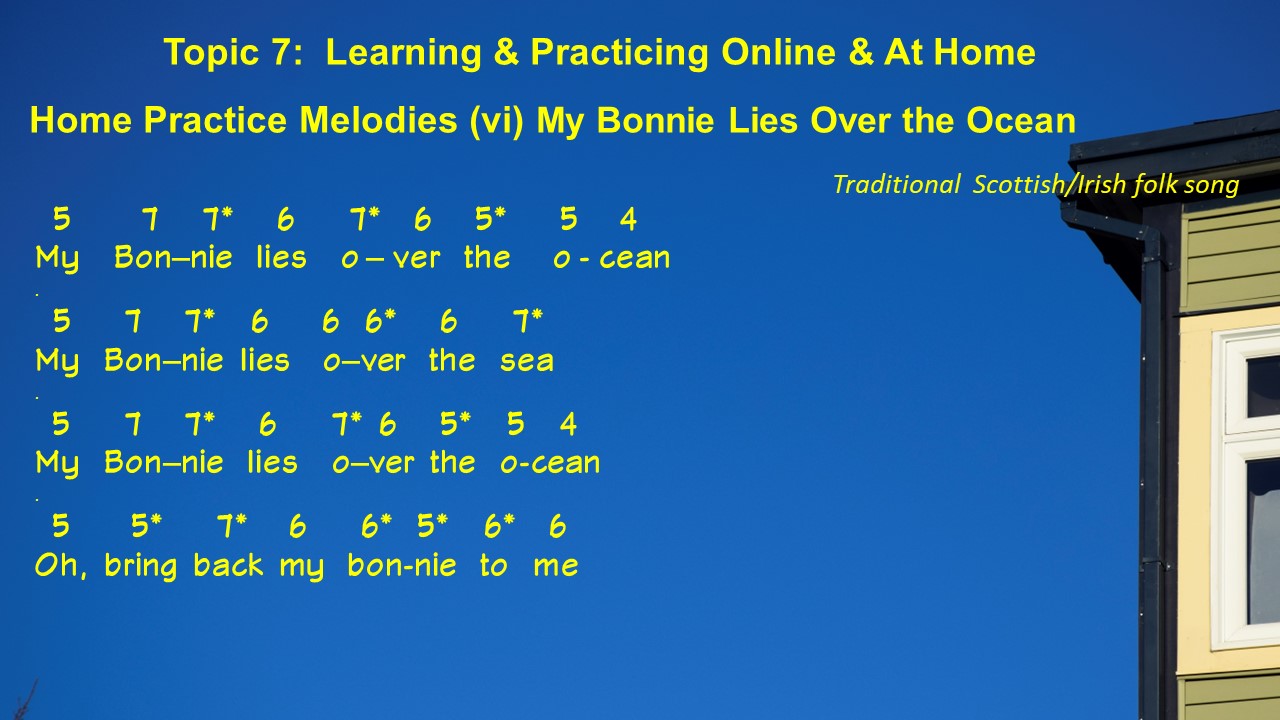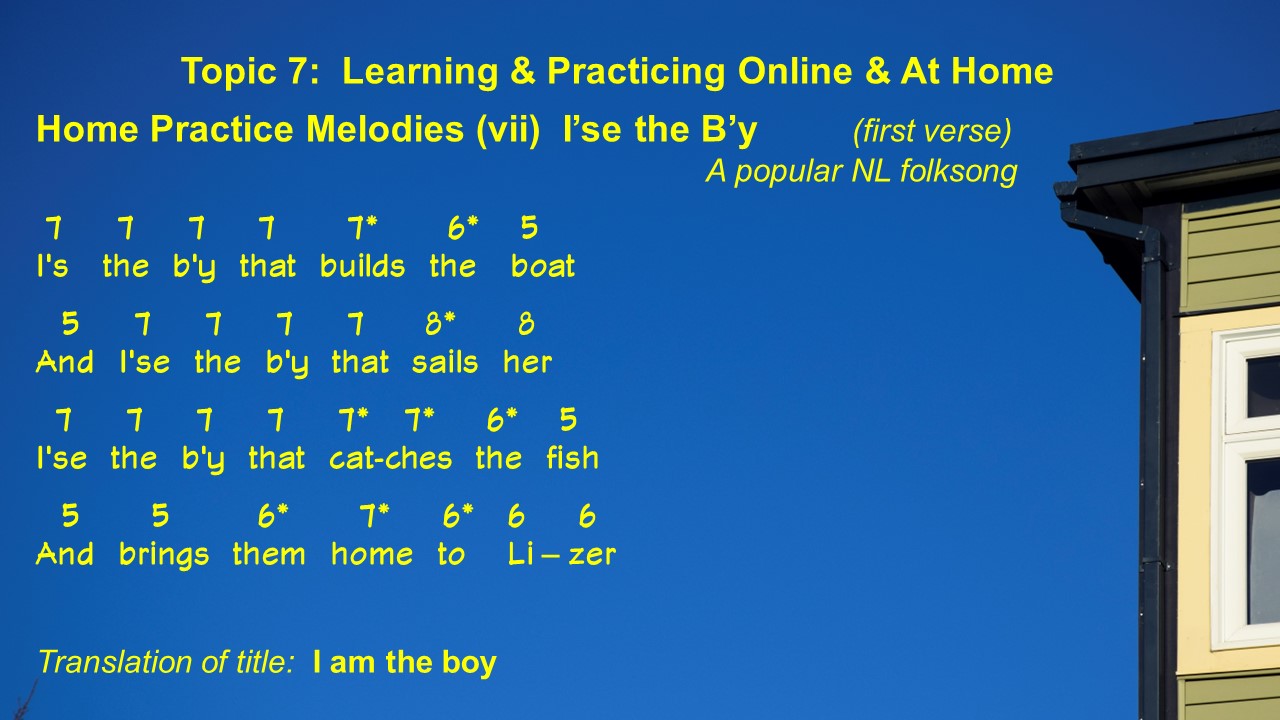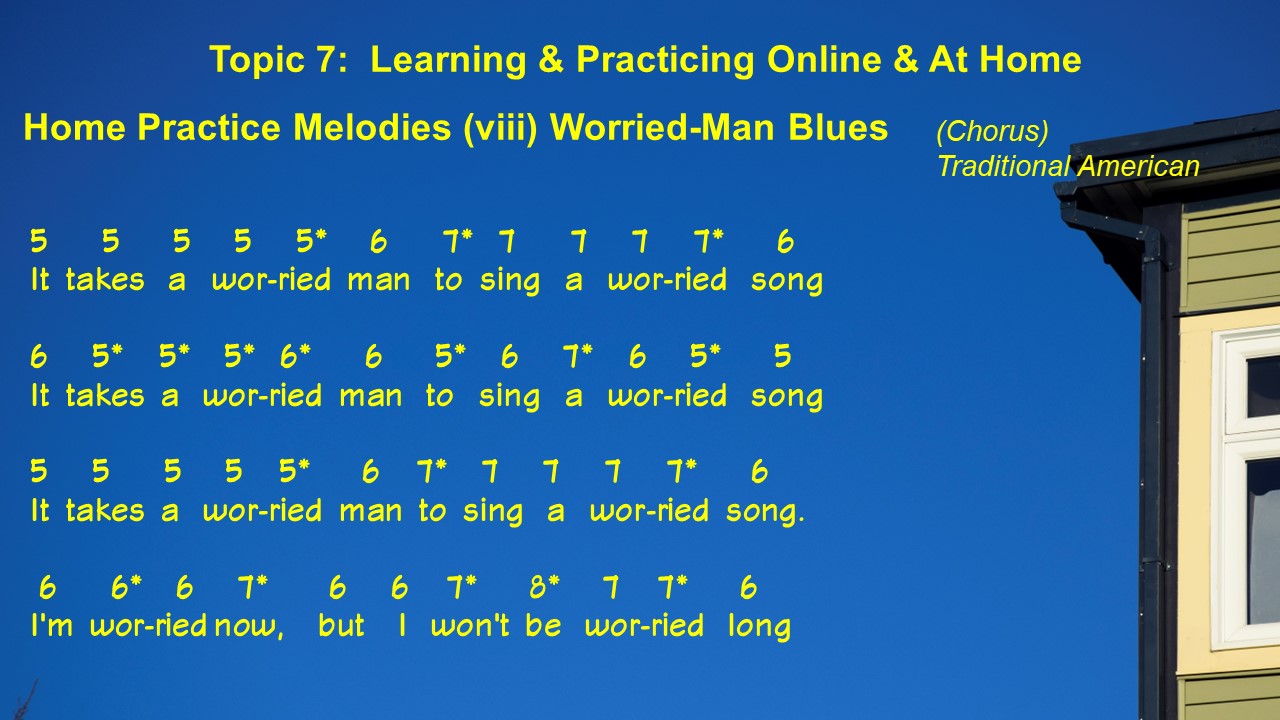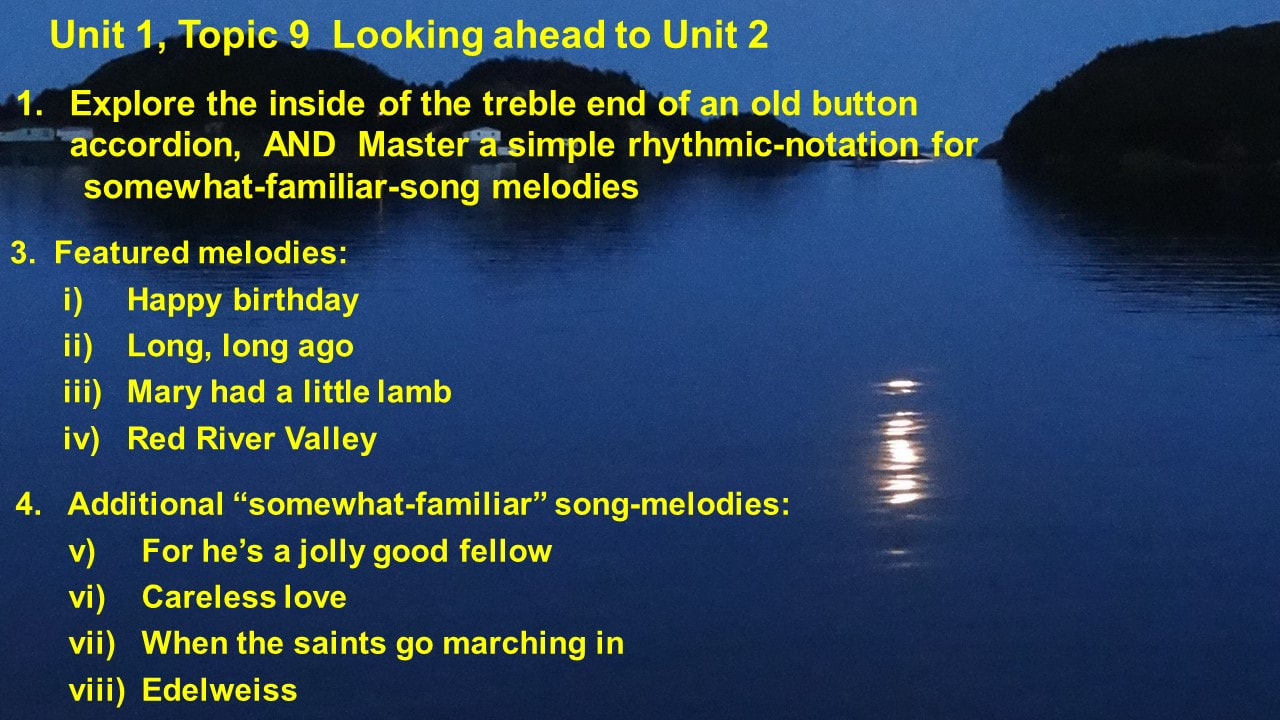Button-Accordion Tutorial Project
(Dual-row G-C, A-D, D-G or C-F with Accidentals)
Based on tunes2play4fun.com & Facilitated by ZOOM
MINI-COURSE BA1: BASIC MELODIES
UNIT ONE (of FOUR)
Playing Very-Familiar Melodies
(on the Dual-row Button Accordion)
(Dual-row G-C, A-D, D-G or C-F with Accidentals)
Based on tunes2play4fun.com & Facilitated by ZOOM
MINI-COURSE BA1: BASIC MELODIES
UNIT ONE (of FOUR)
Playing Very-Familiar Melodies
(on the Dual-row Button Accordion)
WEB SLIDE SET
This is a somewhat compacted version of the slides used in the first Zoom session, and is included here primarily for Zoom participants who have already seen the full Unit 1 slide set, and may want to review parts of it.
INSTRUCTIONAL SESSION ONE
This is a somewhat compacted version of the slides used in the first Zoom session, and is included here primarily for Zoom participants who have already seen the full Unit 1 slide set, and may want to review parts of it.
INSTRUCTIONAL SESSION ONE
Web Slide 1 Zoom Slide 1
Welcome to our basic-level dual-row button-accordion mini-course.
Web Slide 2 Zoom Slides 2 & 3
Disclaimer: This mini-course has been assembled by a (mostly) self-taught player, who is neither a professional musician nor a professional music-teacher, but with a tutoring and instructional development background, and with a new-found love of the button-accordion.
-----------------------------------------------------------------------------------------------
Web Slide 3 Zoom Slide 4
-----------------------------------------------------------------------------------------------
Web Slide 3 Zoom Slide 4
Web Slide 4 Zoom Slide 5
Web Slide 7 Zoom Slides 10 & 11
Web Slide 8 Zoom Slide 12
Web Slide 9 Zoom Slide 13
Web Slide 10 Zoom Slide 14
Web Slide 11 Zoom Slide 15
Web Slide 12 Zoom Slides 16 - 18
Web Slide 13 Zoom Slides 19 - 21
Web Slide 14 Zoom Slide 22 & 23
Web Slide 15 Zoom Slides 24 - 30
Web Slide 16 Zoom Slide 31
Web Slide 17 Zoom Slide 32
Web Slide 18 Zoom Slide 33
Web Slide 19 Zoom Slide 34
"Happy Birthday To You" is a classic, with a simple rhythm and a melody that is universally familiar. Start with bellows at mid-point (half-way between closed and a safe-max-open), using air-lever only if needed.
-------------------------------------------------------------------------------------------------
Web Slide 20 Zoom Slide 35
-------------------------------------------------------------------------------------------------
Web Slide 20 Zoom Slide 35
Play on inside row. Place your first finger at button 3 and your little finger at button 6, covering all the needed buttons with your four right fingers. Start with bellows at mid-point (half-way between closed and a safe-max-open), using air-lever only if needed.
--------------------------------------------------------------------------------------------------------
Web Slide 21 Zoom Slide 36
--------------------------------------------------------------------------------------------------------
Web Slide 21 Zoom Slide 36
Play on inside row. Place your first finger at button 2 and your little finger at button 5, covering all the needed buttons with your four right fingers. (You will need button 2 for the Web 2nd half.)
-------------------------------------------------------------------------------------------------------
Web Slide 22 Zoom Slides 37 - 42
-------------------------------------------------------------------------------------------------------
Web Slide 22 Zoom Slides 37 - 42
Web Slide 23 Zoom Slide 43
Web Slide 24 Zoom Slide 44 - 49
Someone once claimed that mastering most skills is 10% knowledge and 90% practice. While the actual percentages may be different, the mastery of the button accordion certainly depends on some knowledge combined with lots of practice, preferably in small non-tiring periods that are fun.
--------------------------------------------------------------------------------------------------
Web Slide 25 Zoom Slide 50
--------------------------------------------------------------------------------------------------
Web Slide 25 Zoom Slide 50
Play on outside row. Place your first finger at button 5 and your little finger at button 8, covering all the needed buttons with your four right fingers. Start with bellows at mid-point (half-way between closed and a safe-max-open).
--------------------------------------------------------------------------------------------------------
Web Slide 26 Zoom Slide 51
--------------------------------------------------------------------------------------------------------
Web Slide 26 Zoom Slide 51
Play on either row. Place your first finger at button 4 and your little finger at button 7, covering all the needed buttons with your four right fingers.
----------------------------------------------------------------------------------------------------------
Web Slide 27 Zoom Slide 52
----------------------------------------------------------------------------------------------------------
Web Slide 27 Zoom Slide 52
53
Play on either row. Place your first finger at button 5 and your little finger at button 8, covering all the needed buttons with your four right fingers.
--------------------------------------------------------------------------------------------------------
--------------------------------------------------------------------------------------------------------
Web Slide 31 Zoom Slide 56 - 58
Looking ahead to Unit 2 . . . summary outline above.
Note that we'll also start Unit 2 with the very familiar Birthday Song, but this time with a focus on melodic rhythm and rhythmic notation.
---------------------------------------------------------------------------------------------------
Web Slide 32 Zoom Slide 59
Note that we'll also start Unit 2 with the very familiar Birthday Song, but this time with a focus on melodic rhythm and rhythmic notation.
---------------------------------------------------------------------------------------------------
Web Slide 32 Zoom Slide 59
